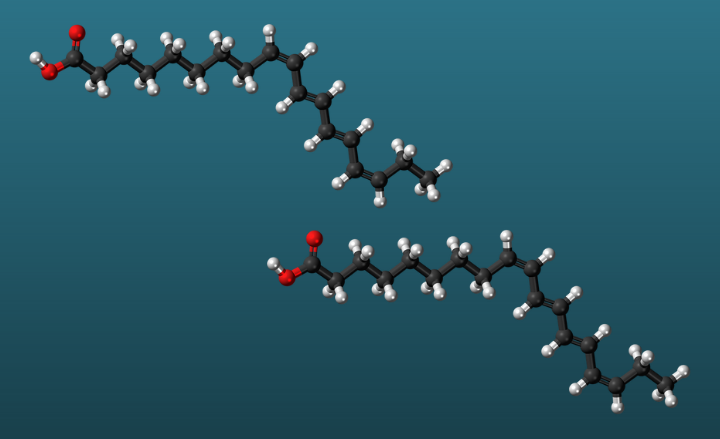A recent study by Rajan Sankaranarayanan’s group from the CSIR-Centre for Cellular & Molecular Biology, Hyderabad has found a novel mechanism of lipid metabolism. This opens up new avenues to understand the production of lipid-based bioactive molecules such as antibiotics.

Lipids are water-insoluble molecules found in living cells. They are of many kinds, and include fats, oils, hormones and waxes. These molecules are essential structural and functional components of cells and are required for their survival and functioning.
The building or degradation of lipids (lipid metabolism) has been thought to happen through fatty acyl-CoA. This is a molecule formed in two steps: (i) A fatty acid gets activated by adenosine triphosphate (ATP), the energy currency of a cell, and forms fatty acyl-AMP. (ii) Fatty acyl-AMP reacts with an abundantly-available molecule called Coenzyme A (CoA) to make fatty acyl-CoA. This was known to happen in a class of enzymes called FACLs, which bring the fatty acid, ATP and CoA together.
In an earlier study, however, scientists found that some FACL-like enzymes could not form fatty acyl-CoA. They attempted the reaction outside cells in test tubes, and found that the reaction stopped at fatty acyl-AMP even in the presence of CoA. This group of enzymes formed a considerable number and were called FAALs. The latest study, published in eLife journal, has discovered the reason behind this difference in functions of FACLs and FAALs.
The scientists teased apart the structures of both these enzymes. The two enzymes have three pockets on them; each to attach a fatty acid, ATP and CoA. The study found that the CoA-binding pocket was sealed in FAALs by bulky residues. Mutants were engineered to remove these residues on the protein. It was seen that the modified FAALs could form fatty acyl-CoA. The researchers concluded that FAALs differ in their function due to inaccessibility to this pocket.
Moreover, a novel pocket was found about 20 – 30° away from the sealed pocket in FAALs. This pocket does not allow CoA but offers entry to a part of another molecule called holo-Acyl Carrier Protein (holo-ACP); it shares a region identical to CoA. “Holo-ACP and CoA both have an arm attached to a head-like region. Despite the tails being identical, the difference in head group makes CoA incompatible. Holo-ACP has a much bulkier head than CoA. But the arms are identical, and it is only these arms that enter the pockets of FAALs or FACLs,” says Priyadarshan Kinatukara, one of the researchers and Project Research Associate at the Centre for Cellular & Molecular Biology (CCMB), Hyderabad.
The designs of the pockets are different in these two kinds of proteins. “FACLs have a promiscuous pocket. Our experiments show that CoA, holo-ACP and oxygen can enter it. On the other hand, the pocket on FAALs is very specific. Every FAAL allows docking of only holo-ACP and not CoA, based on the differences of their head regions,” explains Kinatukara. “Through a detailed structural analysis combined with mutational study, the team has unravelled an elegant mechanism of specificity of FAALs for holo-ACP rather than the ubiquitous CoA,” comments Saikrishnan Kayarat, Professor at the Indian Institute of Science Education and Research, Pune, who studies the functions of complex proteins.
FACLs and FAALs are present in all life forms across evolution. Why do cells have two such structurally-similar molecules? Rajan Sankaranarayanan, the lead researcher and Group Leader at CCMB, states, “We think FAALs are important for cells to make lipid-containing bioactive molecules, only in select situations. These include a cell’s defence mechanism against an attack or its decision to attack another cell. Mycobacterial lipids, fatty acid-containing antibiotics and signalling molecules are good examples of these. On the other hand, FACLs help in the daily grind of making and degrading lipids for a cell’s survival. Our studies suggest that both these classes of proteins have evolved in parallel.”
“Bioactive lipids serve many important roles in living systems, both in normal cellular functions and also in the context of infectious, metabolic and neurological diseases. Understanding the function of enzymes that make these lipids is an essential pre-requisite for the design of molecules that inhibit their activities. Such chemical inhibitors could be very valuable for the treatment of human diseases where bioactive lipids play a critical role in human cells or in micro-organisms such as mycobacteria,” explains Raghu Padinjat, Professor at the National Centre for Biological Sciences, Bengaluru, who studies lipid biology.